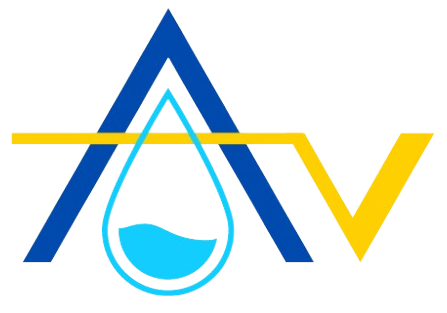How to Clean a French Drain? 7 Steps Guide

French drain cleaning is essential to remove sediment, organic matter, algae, sand, and dirt that clog the French drain. French drain is a subsurface structure, and it should be cleaned using a very few tools and materials. Aqviz experts follow the steps below to clean the French drain
7 Steps to clean a french drain
- Gather relevant cleaning tools and materials
- Locate the cleanout or drain outlet
- Flush the line with the garden hose or jetter
- Use a plumbing snake or auger for tougher clogs
- Clean the outlet and catch basin
- Backflush the French drain if accessible
- Maintain landscape and surface conditions
To minimize clogs and reduce French drain maintenance, you should maintain suitable landscape and surface conditions around the drainage area. The goal is to prevent excess organic debris, sediment, and runoff overload from entering the system and causing blockages.
You should clean a French drain at least once every 12 to 18 months under normal conditions. And also you should also clean the French drain immediately if you notice signs like slow water discharge, standing water, musty basement smells, or overflowing catch basins. And also, you can do this DIY. So let’s see how you should do it step by step.
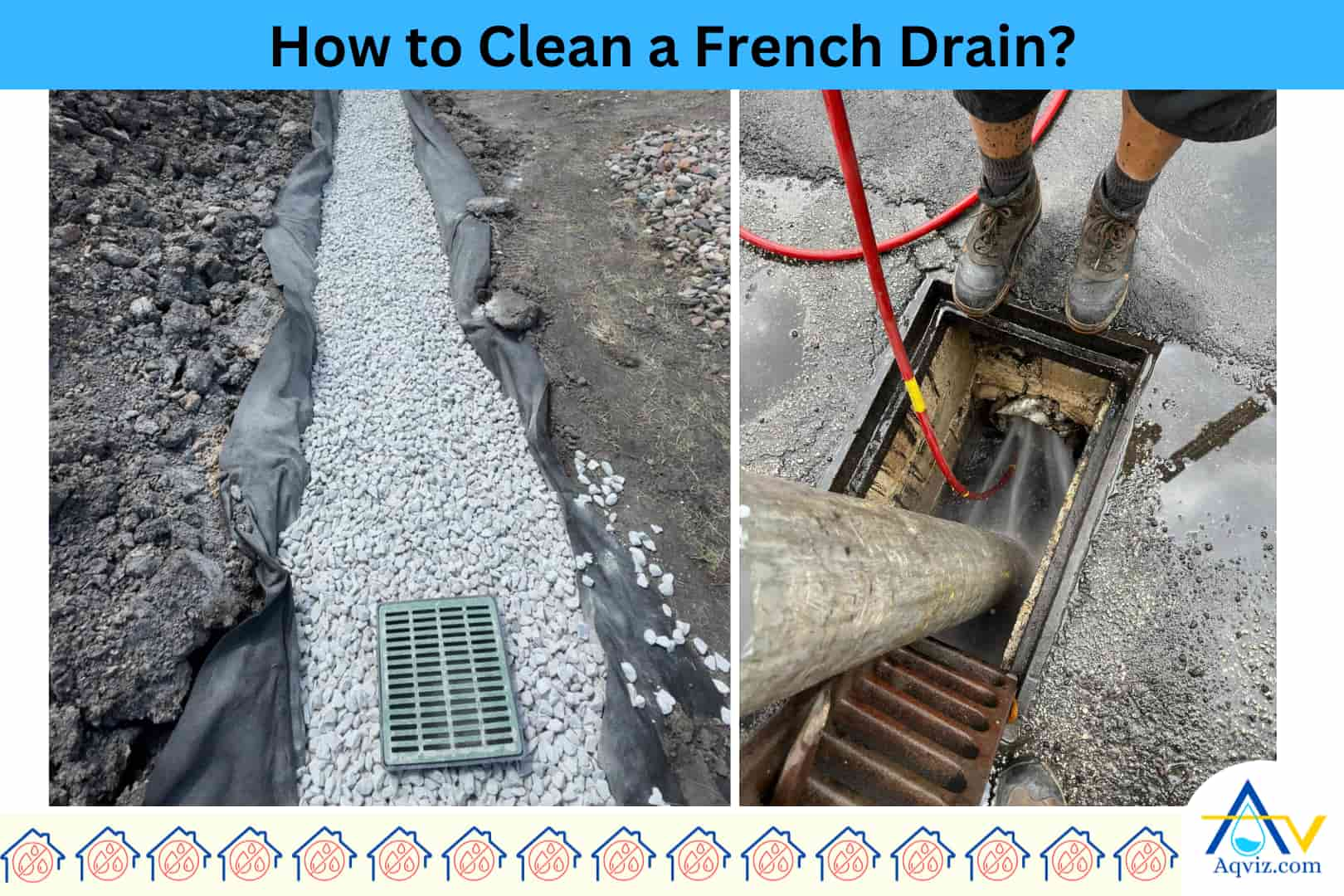
1. Gather Relevant Cleaning Tools and Materials
To clean a French drain effectively, you should first gather all the necessary cleaning tools and materials that match the type and severity of the French drain clog.
You should have these essential tools:
- Garden hose with a high-pressure nozzle
- Grain jetter hose (50-100 feet long) with adjustable PSI
- Plumbing snake or drain auger
- Cleanout access key or screwdriver
- Catch basin scoop or bucket
- Wet/dry vacuum (for accessible catch basins)
- Protective gloves and eyewear
For cleaning materials, you should use vinegar or hydrogen peroxide for mold and algae, and biodegradable drain cleaners safe for PVC or corrugated pipe.
Aqviz experts highly recommend that you avoid harsh chemicals like bleach or caustic soda, because they can damage the pipe or harm the surrounding soil.
A pressure washer attachment with a jetter nozzle is most effective for breaking up thick silt buildup inside long pipe runs.
2. Locate the Cleanout or Drain Outlet
A drain outlet is the end point of a French drain system where collected water exits the pipe, typically discharging into a catch basin, storm drain, dry well, pop-up emitter, or a daylight slope. This outlet is your main access point to inspect and clean the inside of the drain. Most of the French drains outlet is pointed to the sump basin. So there you can find two outlets. You can use these outlets to clean it.
3. Flush the Line With the Garden Hose or Jetter
To clean a French drain, you should begin by flushing the drain line with a garden hose or a drain jetter, which helps dislodge and push loose debris, silt, and organic buildup through the pipe.
This is the most effective way to clear early-stage French drain clogs or maintain flow if the system is partially blocked.
You should insert the garden hose or jetter hose into the cleanout port or drain outlet. Turn on the water at full pressure and feed the hose slowly into the pipe.
If you are using a jetter hose, set the PSI between 1,500 to 4,000, depending on the pipe material and length. Move the hose in and out steadily to scrub the pipe walls and break up debris. You should flush for at least 10 to 15 minutes or until the water runs clear from the outlet.
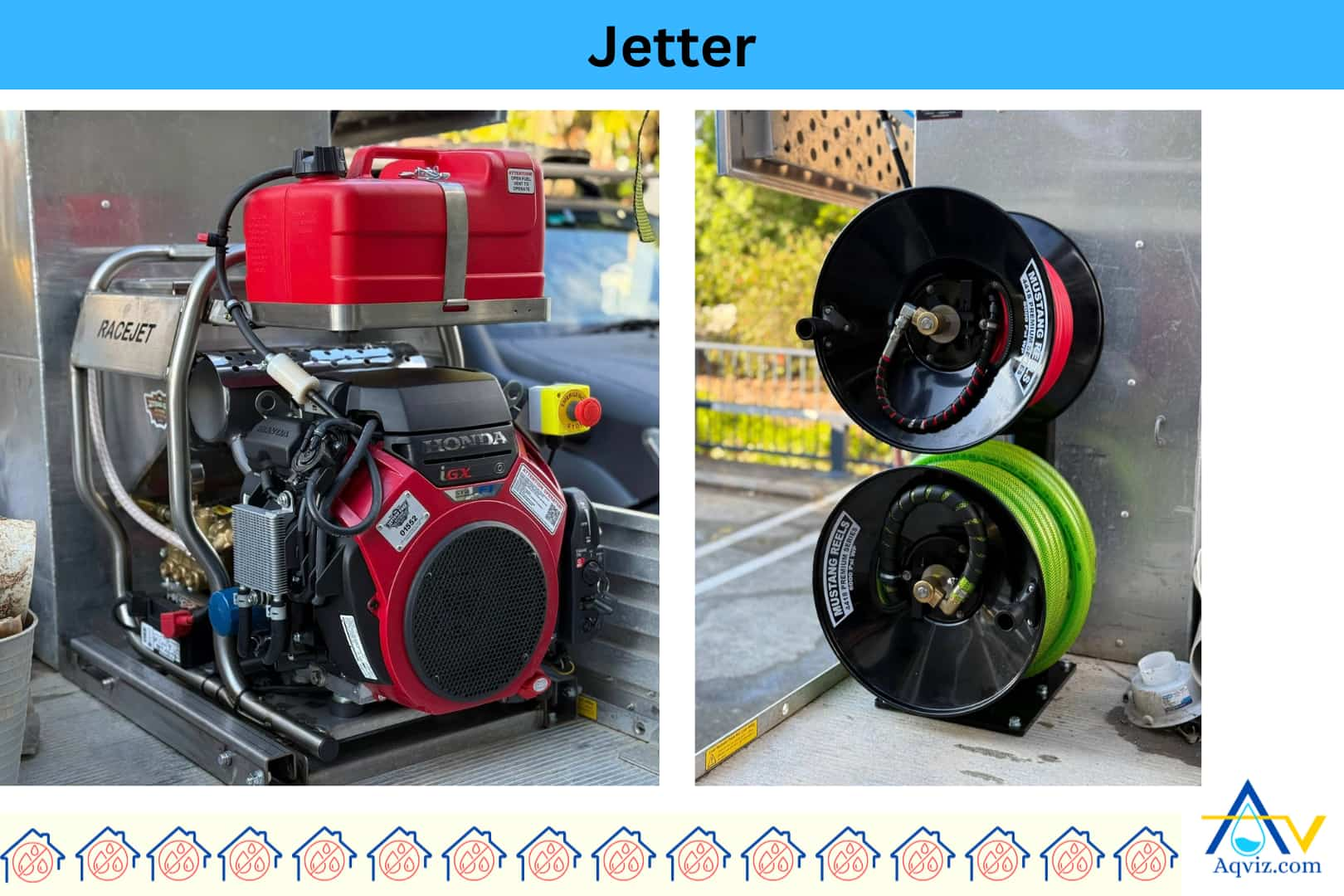
4. Use a Plumbing Snake or Auger for Tougher Clogs
For tougher or compacted French drain clogs that can’t be cleared by flushing alone, you should use a plumbing snake or drain auger to physically break through the blockage. These tools are especially useful for removing mud buildup, root intrusion, or dense organic matter that restricts pipe flow.
You should insert the plumbing snake or hand-crank auger into the cleanout port or drain outlet and slowly feed it through the pipe while rotating the handle. As the cable moves forward, its coiled head hooks or grinds into the clog, allowing you to either break it apart or pull it back out.
For longer runs or more stubborn clogs, you should use a motorized drain auger with at least 50 feet (15 meters) of cable. Once the clog is dislodged, you should retract the snake carefully, clean off debris, and follow up by flushing the pipe again with a hose or jetter to clear out remaining residue.
This guide includes more depth about how to unclog a French drain . This is prepared by the Aqviz experts. We highly recommend you refer to this while unclogging the French drain.
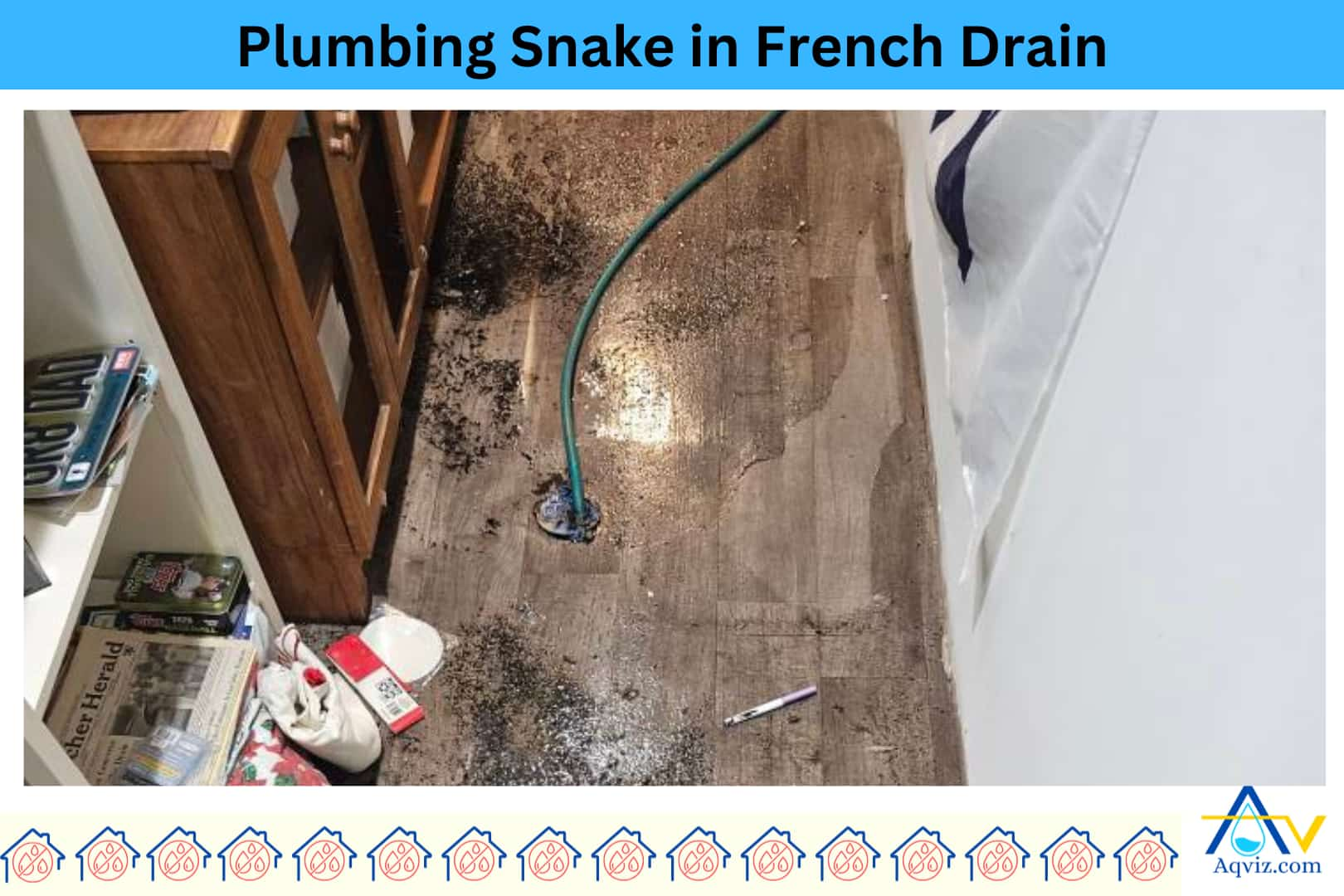
5. Clean the Outlet and Catch Basin
To ensure proper drainage, you should always clean the outlet and catch basin as part of your French drain maintenance. The outlet can collect leaves, dirt, mulch, and algae over time, which restricts flow and leads to backflow or standing water. You should remove any outlet cover or emitter cap and scrub out debris using a stiff brush or rinse it thoroughly with a high-pressure garden hose.
For the catch basin, you should first remove the grate or lid. Using a catch basin scoop, bucket, or wet/dry vacuum, remove accumulated sediment, leaves, and sludge from the bottom.
If water is standing inside, you should flush the inlet and outlet pipes with a hose to restore proper flow. Once cleaned, rinse the interior walls and inspect for cracks or damage.
You should perform this cleaning at least twice a year, especially before and after heavy rainy seasons.
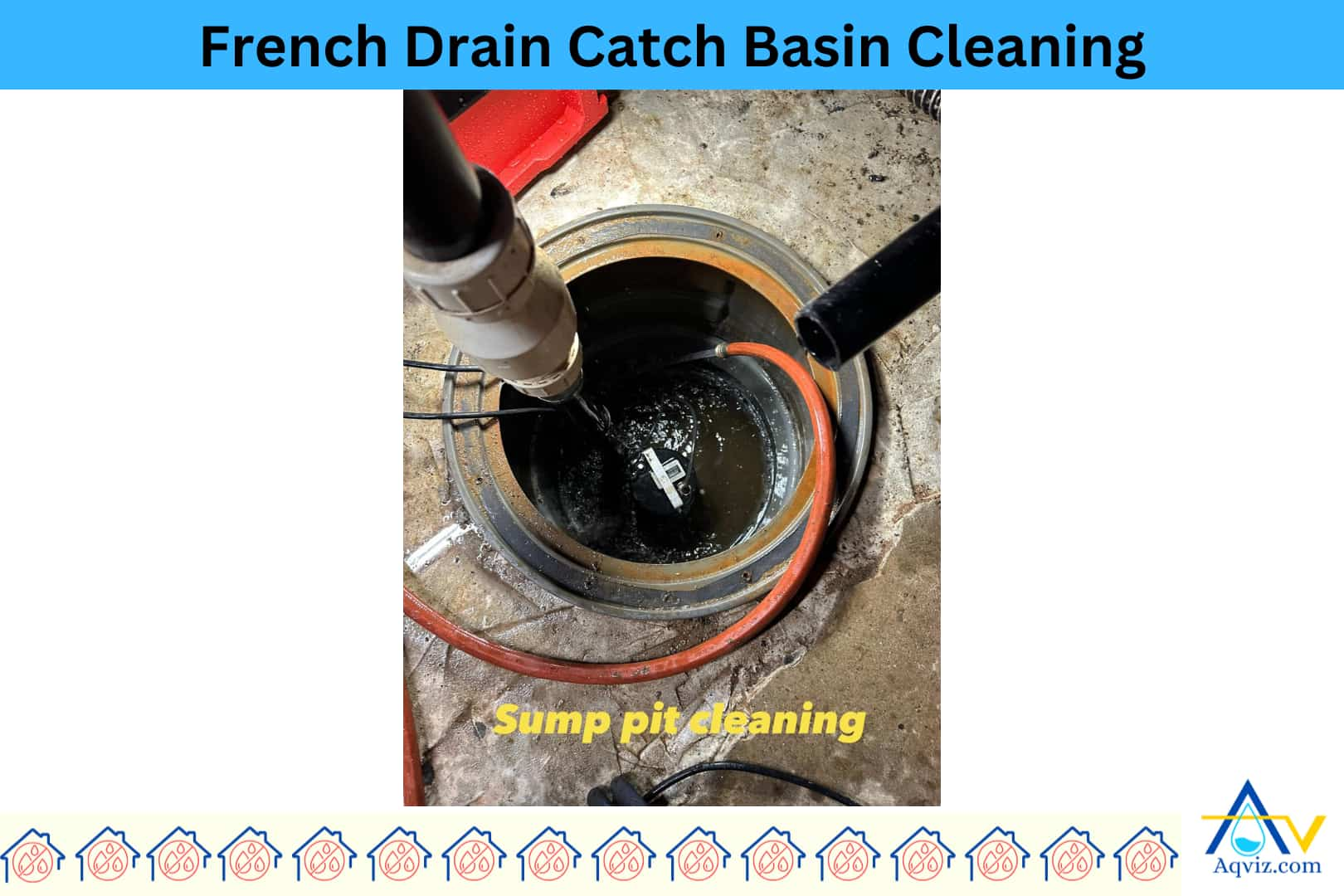
6. Backflush the French Drain If Accessible
Backflushing a French drain is the process of reversing water flow through the system to clear out clogs or buildup that regular flushing might miss. You should do this if the French drain has an accessible cleanout port or outlet where a hose or jetter can be inserted from the opposite direction of normal flow.
7. Maintain Landscape and Surface Conditions
To minimize clogs and reduce French drain maintenance, you should maintain suitable landscape and surface conditions around the drainage area. The goal is to prevent excess organic debris, sediment, and runoff overload from entering the system and causing blockages.
- You should keep grass, mulch, and topsoil at least several inches away from open outlets or catch basins. Install gravel borders or edging around drain components to filter out leaves and dirt.
- You should avoid planting trees or deep-rooted shrubs near the drain line, as roots can invade perforated pipes.
- You should also grade the ground to slope away from the foundation at 1 inch per foot (8%) to control surface runoff naturally.
- Limit overwatering of lawns and gardens near the drain zone, and use proper downspout extensions to direct roof water away from the system.
- Clean gutters regularly to prevent overflow that can wash debris into the landscape and ultimately into the French drain.
- Maintaining these conditions helps preserve long-term drain performance with minimal manual intervention.
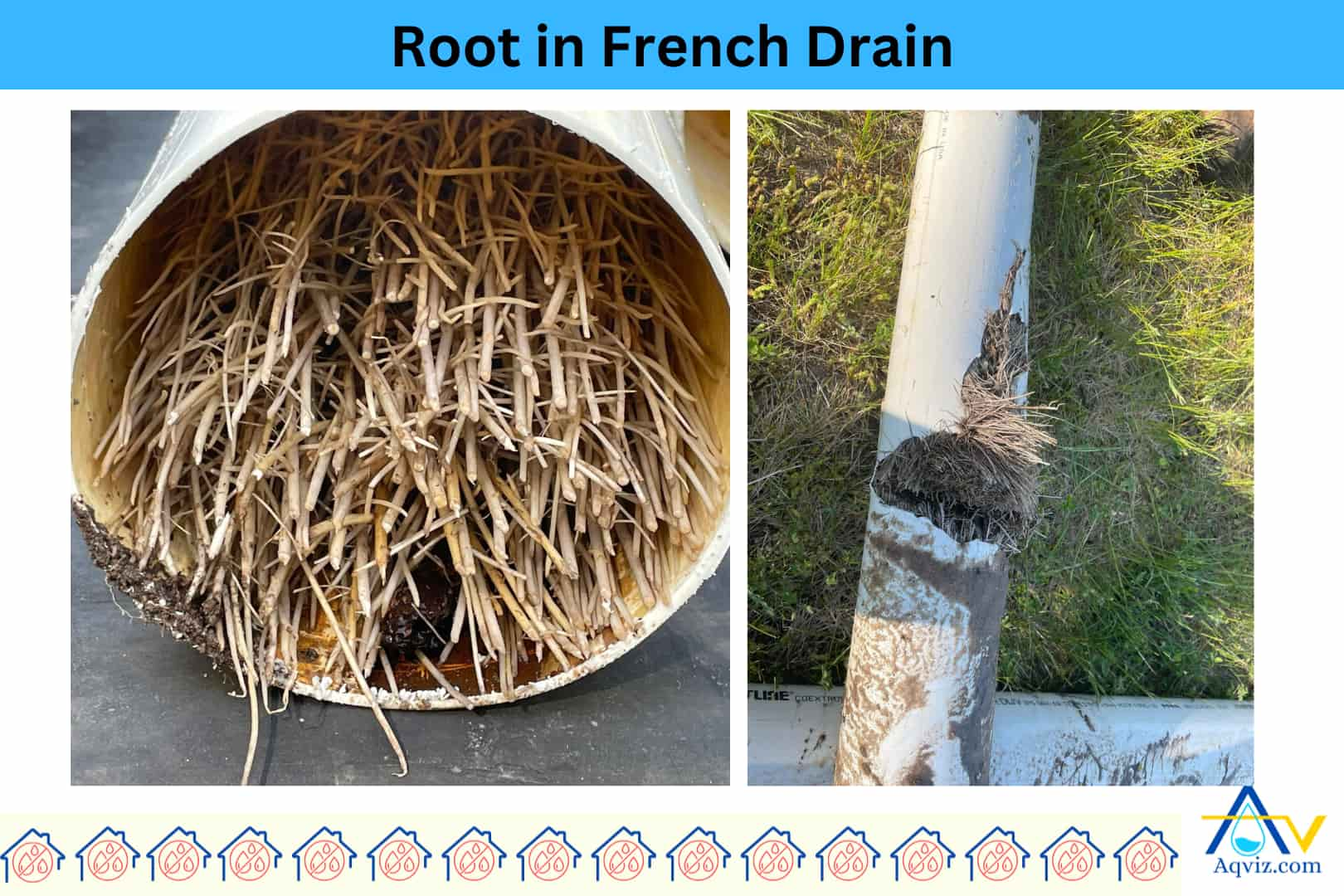
What If the French Drain Is Not Cleaned?
If a French drain is not cleaned regularly, 7 problems can develop that compromise the drainage system and lead to serious water damage in the basement.
- Clogged perforated pipe
- Standing water in the yard or basement
- Musty odors in the basement
- Mold and mildew growth in the basement
- Backflow into the catch basin or sump
- Increase hydrostatic pressure
- Increase soil erosion and foundation weakening
How Often Should a French Drain Be Cleaned?
You should clean a French drain at least once every 12 to 18 months under normal conditions. And also you should also clean the French drain immediately if you notice signs like slow water discharge, standing water, musty basement smells, or overflowing catch basins. Regular French drain maintenance keeps the system flowing properly, prevents clogs, and extends its service life by many years.
Read More About: How to Maintain a French Drain Properly?
Can I Clean the French Drain DIY?
Yes, you can clean a French drain as a DIY project if the system is accessible, the clog is minor, and you have the right tools. Using a garden hose, jetter, or plumbing snake, most homeowners can flush out silt, leaves, or algae buildup from the outlet, cleanout port, or catch basin. Regular DIY maintenance can prevent bigger issues and save on repair costs.
However, if the French drain is completely clogged, buried deep, or has root intrusion, you should consider hiring a professional. Complex blockages often require motorized augers, camera inspection, or partial excavation. For routine cleaning, though, DIY is a safe and effective option when done with care.
